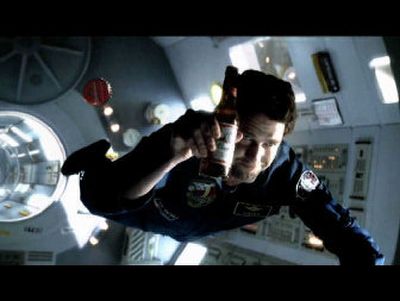Experts: Ads weren’t that super

NEW YORK – Budweiser and Bud Light once again dominated the Super Bowl ads, but it was the entry of amateurs that caught the eye of several marketing experts asked about the annual advertising showdown, which some said didn’t pack the punch of previous years.
A group of advertising faculty at Michigan State University voted as their favorite a spot featuring the comic Carlos Mencia teaching a class of immigrants how to ask for Anheuser-Busch Cos.’s Bud Light, saying it cleverly mixed humor with repetitions of the brand name.
Overall, however, Michigan State advertising instructor Dave Regan said he was “truly not that impressed” with this year’s crop.
“There was nothing that gave me the big ‘wow’ factor,” said Regan, who worked in TV advertising for 20 years before taking up teaching.
Of particular interest, he said, was a pair of amateur-produced ads for Doritos, one of which aired early in the game showing a chip-munching driver distracted by a passing woman.
“Giving amateurs a shot at producing this stuff is great,” Regan said, adding that it was healthy to open up the playing field to “unjaded minds.”
Other experts also welcomed the YouTube-inspired infusion of new ideas into Super Bowl advertising, but some were skeptical about whether this was the beginning of a new wave of ads generated by users or more of a one-time event.
“As a marketing professor it was interesting, but as a consumer – I’m not so sure,” said Ambar Rao, head of the marketing faculty at the Olin School of Business at Washington University in St. Louis.
Other amateurs also found their way into the Super Bowl, but with help. College student Katie Crabb, of Wisconsin, won a contest held by General Motor Corp.’s Chevrolet division, and then a team of professionals made her idea for an ad into reality. The NFL also did a professionally made ad based on an idea from a fan.
With the top price for the ads edging as high as $2.6 million for a 30-second spot, once again questions arose over whether advertisers were really getting their money’s worth.
Robert Duboff, the head of a marketing consulting firm who also teaches marketing at the MIT Sloan School of Management, noted that it was especially hard for vendors of low profit margin products such as candy bars to justify the cost of an ad.
While there is little in the way of hard research to prove or disprove the cost-efficiency of buying a Super Bowl ad, Duboff pointed to one that he found to be particularly ineffective – a spot for Mars Inc.’s Snickers bar that showed two auto mechanics accidentally kissing.
“The relevant measure is the incremental dollars they see, and I would be surprised if they see enough of them,” Duboff said. “You have to sell a lot more Snickers bars to make up that $2.6 million.”